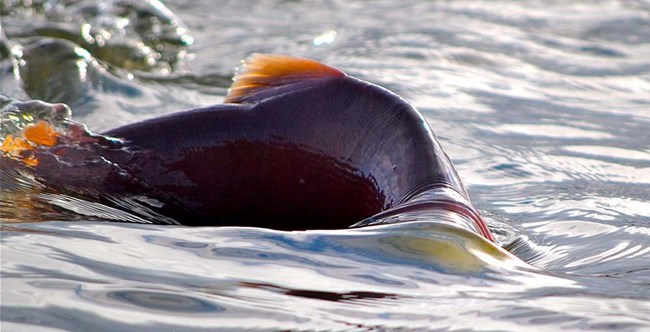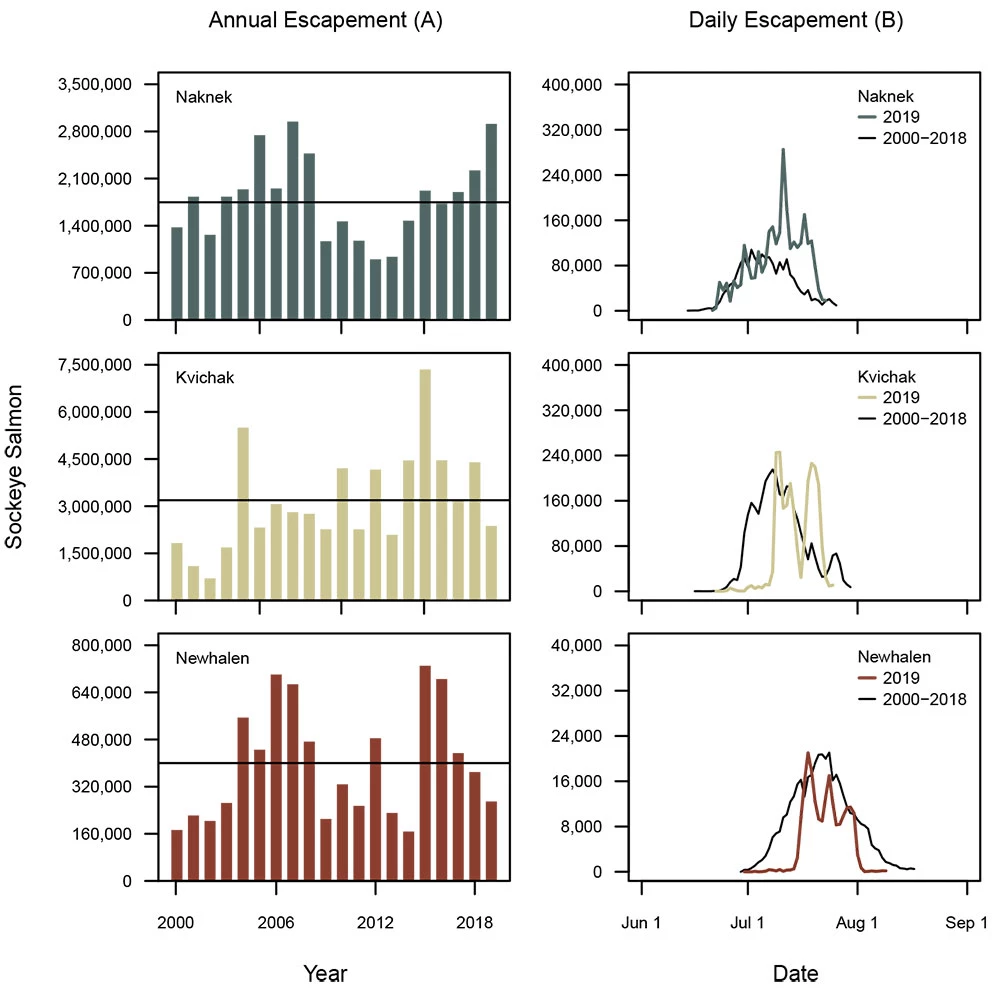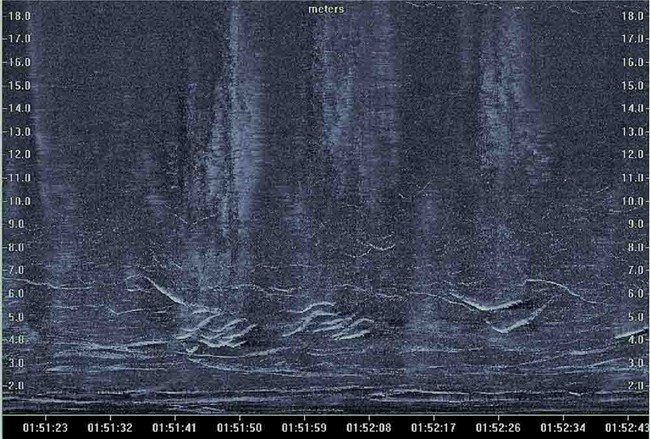Last updated: April 13, 2020
Article
Salmon Monitoring in Southwest Alaska
Sockeye salmon (Oncorhynchus nerka) are an important cultural, economic, and ecological resource in Alaska, particularly in the Bristol Bay region of southwest Alaska. Each year, up to 60 million sockeye salmon migrate back to Bristol Bay to spawn and 60-75% of these returning adults are harvested by commercial fisheries. What enables such high harvest rates year after year? Consistent management and monitoring of salmon returns by the State of Alaska is part of the answer. But research suggests that this level of harvest would not be sustainable without the mosaic of intact freshwater habitats upstream of the fishery. Diverse intact habitats foster genetically diverse salmon populations with asynchronous highs and lows in returns—a quality that increases overall resilience of the resource.

USFWS/K. Mueller
Findings
Bristol Bay
According to the Alaska Department of Fish and Game (ADFG), the annual escapement of sockeye salmon to Bristol Bay in 2019 was 13.4 million fish. An additional 43.0 million sockeye salmon were harvested, yielding a total run of 56.4 million fish, the fifth consecutive year that the run has exceeded 50.0 million.
Katmai
The estimated annual escapement of sockeye salmon for the Naknek River in 2019 was 2.9 million fish, or 67% above the average annual escapement from 2000 to 2018 (1.7 million fish; Figure 1A). The timing of the midpoint of the return in 2019 (July 11) was six days later than the average for the years 2000 to 2018 (Figure 1B).
Lake Clark
The estimated annual escapement of sockeye salmon for the Kvichak River in 2019 was 2.4 million fish; for the Newhalen River, it was 0.27 million fish (Figure 1A). For both rivers, escapement in 2019 was at least 25%below the mean from 2000 to 2018 (3.2 million and 0.40 million fish for the Kvichak and Newhalen, respectively). The midpoint of the return to the Kvichak River in 2019 (July 14) was six days later than the average for recent years, while that for the Newhalen River (July 23) was two days later (Figure 1B). Salmon counted in the Newhalen River are a subset of those counted in the Kvichak River further downstream, comprising 14% of the Kvichak escapement, on average.


Methods
Counting towers are one of several methods for monitoring salmon escapement. Alaska Department of Fish and Game (ADFG) currently operates counting towers on the Naknek River downstream of the boundary of Katmai National Park and Preserve and on the Kvichak River downstream of the Lake Clark National Park and Preserve boundary. National Park Service (NPS) staff operate counting towers on the Newhalen River, upstream of ADFG’s Kvichak towers, but downstream of the Lake Clark boundary. Since 2017, the NPS has also monitored Newhalen River escapement using sonar (Figure 2). Paired data from counting towers and sonar help estimate how many salmon pass the towers uncounted, especially in years with turbid water, like 2019, when fish are hard to see.
